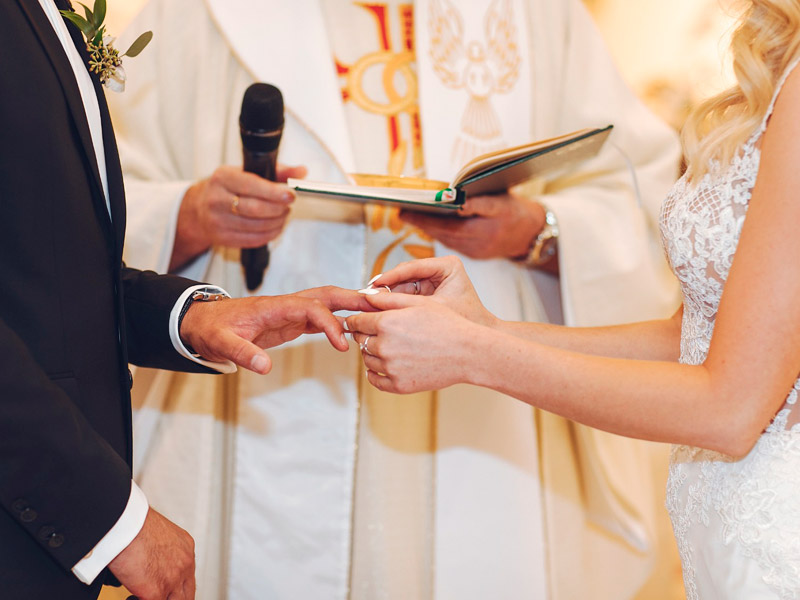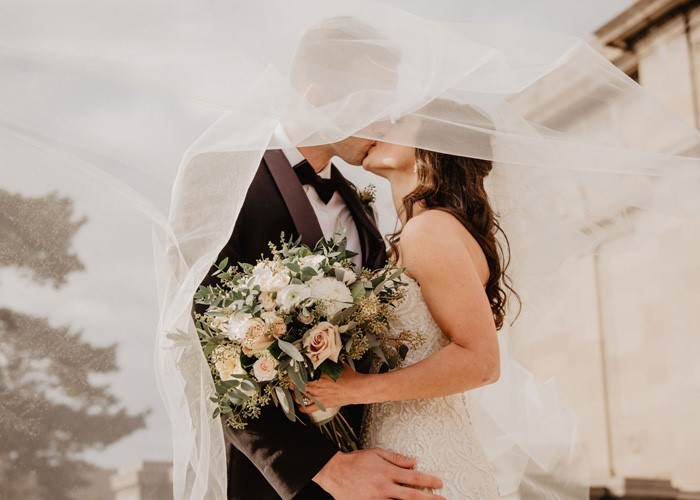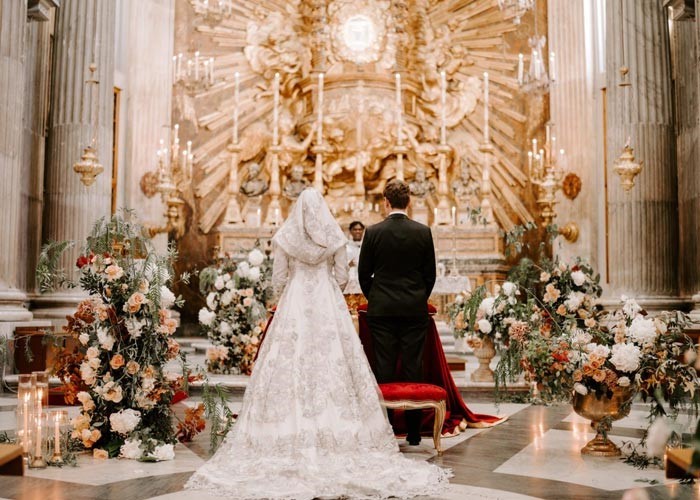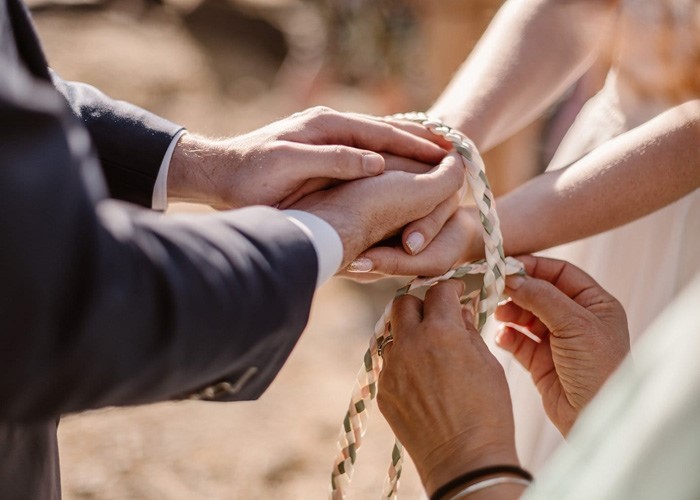
During the initial stages of planning, all prospective brides and grooms find themselves having to decide on the type of ceremony for their wedding: civil, religious or symbolic? Each has different characteristics, and the following will depend on it important choices such as selecting ceremony and reception locations.
In this article I will explain what the main differences are so that you can choose the solution that best suits your taste and needs.
CIVIL MARRIAGE
In order for a marriage to have civil validity, it is necessary to be married in a city hall (town hall wedding) or by civil ceremony at a location recognized as a “municipal home.” Although the procedure for celebrating a civil marriage is quite simple, sometimes one may encounter long waits due to the timing of the issuance of certificates by the municipal offices in charge.
The first step in the bureaucratic process is to apply for publications at one’s municipality of residence. The clerks will then be responsible for compiling for you all the necessary documentation in order to block the date for the promise of marriage(oath), which will be communicated to you by them at a later date. On that day you will go to the town hall, accompanied by a witness of your choice and a parent who will prove your nonconsanguinity; if your parents cannot attend, you will have to bring with you a statement from them that you are not consanguineous.
In addition, remember to carry the following documents:
- A valid identification document;
- a form to be purchased from the city precinct (cost varies depending on the type of marriage).
When the oath of office is completed, you will proceed with the signing of the request for publications, which will be displayed at the Door of the Municipal House, in your municipalities of residence. After 8 days + 3 with no third-party objections, you will have 6 months to tie the knot.

Those who wish to get married in a municipality other than the one in which they live must go to their municipality of residence and apply for a “nulla osta,” which is a certificate that allows them to conduct the civil ceremony elsewhere. Usually it is the office itself that forwards the authorization, applicants’ data and documentation pertaining to publications to the other municipality; if this does not happen, the bride and groom-to-be will have to take care of it by e-mail or fax.
As for the actual rite, as a rule, the civil marriage is celebrated in the presence of the mayor (or his delegate) who reads Articles 143, 144, 147 of the Civil Code, concerning the marital duties enshrined in the union. Next, the registrar pronounces the phrase “Wilt thou…” followed by the exchange of wedding rings and the signing of the registers by the newlyweds and witnesses.
Often this formula proves to be somewhat “sterile” since it boils down to simply reading articles-my advice is to rely on a celebrant to act in the place of the municipal official, who will still be present to sign the various documents.
Whether you are having a wedding in the City Hall or elsewhere, the civil ceremony is a more basic type of ceremony but you have the option of personalizing it with poems, readings or symbolic gestures. If you want to avoid hiring a professional celebrant, the civil marriage can also be officiated by a friend or relative as long as they are of age and have civil and political rights. This will give the rite a more intimate and engaging tone!
RELIGIOUS MARRIAGE
On the other hand, if you are projected on the church wedding, you will need both the mandatory documents for the civil ceremony and those required for the religious wedding. These are the Baptism certificate, Confirmation certificate, ecclesiastical free status certificate, and premarital course attendance certificate. In addition, should you desire a religious wedding in a diocese other than your own, you must also have ecclesiastical “clearance” issued by your home parish.
But what happens in the case of mixed marriage when one member of the couple is an atheist or of another creed? In this case, the religious marriage can be celebrated in church, according to the Catholic rite and with the presence of two witnesses, under the following conditions:
- it is essential that the party of the Catholic religion (groom or bride) has received the sacraments of Baptism, Communion and Confirmation and that they declare their readiness not to abandon their religion and to educate their children in the Catholic faith;
- the non-believing groom or bride, or of another religion, is not obliged to convert to Christianity but is called upon to promise not to hinder the faith of the other person or the Catholic education of any children and to accept and share the values of marriage (uniqueness, exclusivity, indissolubility and fruitfulness).
Remember that in order for a mixed church wedding to be considered valid, according to the law in force in the Latin Church, a license must be obtained from the bishop of the diocese where the rite is to be celebrated: simply contact the pastor of the church where the wedding will be held.

In the course of the church wedding celebration, there is one detail that never goes unnoticed: the mass booklet that allows the ceremony to be followed more closely. As ministers in the Sacrament of Matrimony, it will be up to you to choose the Bible readings and the manner in which to formulate consent.
The full version of the Mass booklet contains:
– Rites of introduction
– Memory of Baptism
– First Reading
– Responsorial Psalm
– Second Reading
– Gospel passage
– Promise
– Blessing of the rings
– Wedding blessing
Specifically, the First and Second Marriage Readings are selected by the bride and groom (from the Old and New Testaments, respectively) and during the ceremony, they are read by two loved ones chosen by the couple. I recommend that you choose who will carry out this delicate task well in advance, so that those directly involved have time to prepare as best they can.
Finally, let us not forget concordat marriage, which is recognized by both the Catholic Church and the Italian state. It, because it is celebrated in a religious rite by a minister of the Catholic Church and transcribed in the records of the municipality, also has civil effects. Its name originates from the Lateran Concordat, the 1929 agreement between the Italian state and the Holy See, which introduced concordat marriage among religious marriages. In essence, it consists of the combination of religious and civil marriage: at the end of the celebration in the Church, in fact, the priest reads Articles 143, 144, and 147 of the Civil Code.
The pastor then draws up the marriage act in duplicate originals; one of the acts must be sent, together with the request for transcription, to the mayor of the municipality of the city where the ceremony took place, within 5 days after the wedding took place. If the marriage act is regular, it will be transcribed by the mayor and communicated to the parish priest who will record the notice received on the marriage register so that everything remains in the parish archives. Upon completion of the procedure, the newlyweds are legally married.
SYMBOLIC MARRIAGE
Increasingly trendy, symbolic marriage is an informal ceremony that lends a touch of romance to the secular rite, without any religious or legal ties. Moreover, this type of ceremony is preferred by couples who decide to get married in a country other than their own and can be performed anywhere.
Since it has no legal value, those who intend to make it so, must also get married in the municipality, a few days in advance, or in a location recognized as a “municipal home.” Many couples, for convenience, decide to have their wedding ceremony and banquet in the same place, but what is most important, is that you choose a venue that speaks of you and your love story.
Popular symbolic rites include:
- The sand ritual: groom and bride each have a differently colored container of sand, which they will pour into one larger container, symbolizing their union;
- The rite of light: the bride and groom light, each with their own candle, a candle placed between them (a metaphor for love feeding one fire);
- Handfasting, also known as the “ritual of tied hands”: a ritual common in Ireland and Scotland: the bride and groom cross their hands to form the infinity symbol, and the officiant is instructed to tie them with colorful ribbons, to symbolize their bond;
- Ring Warming: the wedding rings will be passed among the guests, who will kiss them or hold them to their chests as a sign of good luck, before being worn by the bride and groom;
- The symbolic rite of the rose, the most romantic of all: the bride and groom each exchange their own rose, symbolically giving the life of one another. After that, both roses are placed on a table, inside a vase, for the duration of the ceremony.

You may decide to entrust the role of celebrant to a professional or to someone close to you who is good at managing his or her emotions and entertaining guests. In my opinion, it is best to avail yourself of a professional celebrant who can support you in the most practical matters; someone who can meet with you in advance and then create an exciting narrative of your story to be displayed during the rite. In case you have chosen to integrate the symbolic rite to the reading of the articles to make the marriage legal, refer to what is said in the section on civil marriage.
Finally, to make the ceremony even more touching, provide for interventions by friends, witnesses and/or relatives: as a wedding planner, I always make sure that the contents of mutual promises of love and the texts of what their loved ones will say reach the graphic designer without being intercepted by the bride and groom!